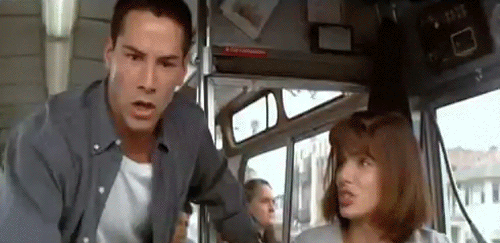On pivots and the Helsinki Bus theory

2017 for me is the year of pivoting to a new focus: marketing through side products. The short version: Hubspot gets 30,000 leads per month from the website grader, and I believe every software company can find a similar product for their market, a free product that qualifies leads into their pipeline 100x better than any whitepaper or webinar.
But I want to talk about pivots, the pivots of our lives, because we hear a lot about businesses pivoting but we don’t talk enough about our own personal pivots.
Should You Pivot?
The first question, which is quite interesting is: should you pivot? A popular meme this decade has been the Helsinki Bus Theory. Here’s Taylor Pearson’s treatment of it:
In downtown Helsinki, there is a bus station with around two dozen platforms. Hundreds of buses leave from the station each day. They set off on the same route for the first mile, stopping two or three times, all at the same set of stops.Metaphorically, imagine each stop as a period in your life. Despite being on a different bus from everyone else, you stop at all the same stops. What most people do is they get two or three stops down the road, realize they’re on the same route as everyone else, get off and grab a cab back to the bus station — life is short.
They get on another bus and two or three stops down the road again, they look around to see they’re on the same path. They get off and hop another cab back to the bus station.
But what happens is that after a mile or so, the bus routes fork. The 21 heads South and the 71 heads North. Eventually, the tendrils of bus routes stretch far out of downtown Helsinki, each ending it’s own unique, monopolistic destination.
Originally written as a commencement address for the New England School of Photography as a metaphor for young, ambitious photographers, the Helsinki Bus Station Theory solution is unglamorously simple and effective:
Stay on the bus. Stay on it.
The Helsinki Bus Theory is excellent advice for most people because it is easier to adopt than the better but more complex advice:
Know when and how to transfer buses.
The reality of our lives is we need to change buses, so knowing how is a key skill.
Life is a Series of Pivots
In 1976 Gail Sheehy introduced “midlife crisis” to the mainstream in her book Passages,

What fewer people know is she actually identified five major crises. To her a crisis wasn’t the portrait of a balding man in a red car: it was the buildup of angst from staying on the wrong bus too long.
From her interviews, she found that the crises don’t follow specific ages, but they follow each other.
You may not know when you have to change buses, but you’ll likely change five times, if not more.
The Paradox of Pivots
The Paradox of Pivoting
You’re supposed to be bad at pivoting — that’s normal.
The thing about any skill you only use 5–10 times in your life: you’re probably not good at it. If you are, its either innate or a sign that you’re bad at the bus part.
Consider: who do you know that is great at getting married? Probably someone who has been divorced a dozen times. Who do you know that is great at interviews? Probably a serial job changer who fails at their work.
So it turns out the knowledge about how to pivot, how to change buses, is somewhat ignored because we all whisper “stay on the fucking bus.”
The Rules of the Bus (How to Pivot without Pissing People Off)
There are some clear rules to pivots that apply to many situations.
Rule #1: You don’t get to drive the next bus (yet)

In fourth grade I was nearly elected school president and spent the entire year installing new Apple computers at my school. Every fifth grade teacher wanted me in their class just to have the tech support.
Before the next year I changed schools: I discovered, to my surprise, that no one wanted me to be their student body president or install their computers.
One of the big mistakes we make when we pivot is thinking we can keep the same status after. In reality, status is one of the first casualties of a good pivot: it is one of the most appreciated and least liquid of currencies.
If you resist the urge to command the driving seat on the next bus, you might find there is a better seat open in the back.
A few years later I was struggling in school, when we moved again before I started high school. This time I understood: it would take four years, but I would eventually drive the new bus.
Rule #2: You don’t get to stop the bus

Today most buses in real life stop for passengers. On the roads of our lives, the buses don’t stop.
I first wrote code twenty years ago, creating a menu in DOS to launch applications. I first wrote a line of Javascript ten years ago. That experience means nothing now: the coding bus doesn’t stop because you stop.
Rule #3: Bring exact change

When you pivot you need to understand the costs.
In 2010 I was consulting in marketing technology when I helped launch an immigration software startup. All marketing is the same, right? Not really. I had no sense of the cost of learning required to sell a new product in a new market.
I wasn’t on the wrong bus, but I wasn’t prepared to pay the fare. Fortunately I was able to quickly get back on the previous bus without losing my seat.
The biggest cost of pivoting is becoming known for pivoting. Imagine getting on a bus where every other person has been there for 20 years: at first they might find you refreshing, but its going to take a long time to catch up. This is why sometimes its good advice to stay on the fucking bus: the cost of pivoting is real.
When you know the costs and pay the price it can work out beautifully.
In university I changed majors half a dozen times, ultimately committing to Philosophy when the school software refused to let me enroll without it.
I knew Philosophy majors made less money than the tech degrees I left behind, so I immediately enrolled in business school, figuring it would be better to be viewed as the MBA student with potential rather than the Philosophy graduate without a legible body of work.
You cannot always know the costs, but you must be ready to pay.
A year ago I shut down agency side of my business, removing overhead and opening new doors but also losing the optionality to rapidly deploy a 100,000 hours of labor per year.

I didn’t realize then some of the costs, such as how others distinguish between a freelancer and an agency owner. But I knew I was on the wrong bus, and I was ready to pay the costs.
I knew I wanted to spend more time creating via writing and code, and I wanted to work on the edge of marketing rather than manage a body shop.
In the year since, I took an accidental RTW trip, spoke at a conference in London, and maintain a newsletter with more clicks than sends.
This year I’ll continue to pay the costs, but I can anticipate them, so its ok.
Rule #4: We need you to change buses

No one ever made a dent in the universe by sitting quietly on the same bus their whole life, ok?
Venkat Rao calls this the need to act in the world. On every new bus you’ll find three stages:
- Labor: the private but necessary part of life that only produces to consume, with perhaps a small surplus. Paying your fare on sitting down.
- Making (poiesis): that part of action that produces enduring things that become part of the world, reshape it in some form, and slowly wear out through use. Things that can potentially outlive you. Etching your name into the seat with a pocketknife.
- True action (praxis): consciously causing consequential events that irreversibly unleash processes of change into the world, and do not naturally terminate. Becoming the person who directs where the bus is going.
Most passengers will just sit in their seats. A few will vandalize the bus to create some semblance of permanence. Only a few will be able to understand the game of the bus and direct where it goes.

The interesting stories are written by those who have been on enough buses to write the story of the next bus.